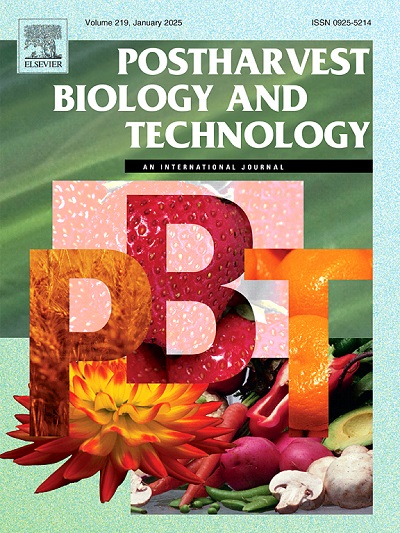Revealing cold plasma-mediated changes in wolfberry wax and related gene expression during storage
IF 6.4
1区 农林科学
Q1 AGRONOMY
引用次数: 0
Abstract
Cold plasma (CP) is promising for postharvest storage and processing of fruit. However, as the first surface material that CP interacts with, the effects of CP on the cuticular wax of fruit remain unclear. This study aimed to elucidate how direct treatment with dielectric barrier discharge plasma, at varying power levels, affects the structure, composition, and biosynthesis of wolfberry wax, and its implications on postharvest storage and drying. Our findings reveal a power-dependent response. High-power CP (>20 W) increased wax hydrophilicity, accelerating drying but potentially compromising storage stability due to increased water loss. Conversely, low-power CP (<20 W) caused minimal initial damage, with partial recovery observed during storage. Notably, 10 W treatment even promoted alkane accumulation after two days, potentially enhancing storage quality. High-power CP (40 W) induced changes in wax composition, transforming alkanes into alcohols, ketones, fatty acids, and lipids, while reducing long-chain alkanes and fatty acids, and increasing short-chain alcohols and esters. These changes were linked to the downregulation of genes involved in alkane hydroxylation, wax precursor synthesis, and the acyl reduction pathway. In contrast, 10 W treatment exhibited a milder and more targeted impact on specific wax biosynthesis steps. These findings provide insights into CP's effects on waxes, guiding CP processing for wolfberries and other fruit to enhance postharvest quality.
求助全文
约1分钟内获得全文
求助全文
来源期刊

Postharvest Biology and Technology
农林科学-农艺学
CiteScore
12.00
自引率
11.40%
发文量
309
审稿时长
38 days
期刊介绍:
The journal is devoted exclusively to the publication of original papers, review articles and frontiers articles on biological and technological postharvest research. This includes the areas of postharvest storage, treatments and underpinning mechanisms, quality evaluation, packaging, handling and distribution of fresh horticultural crops including fruit, vegetables, flowers and nuts, but excluding grains, seeds and forages.
Papers reporting novel insights from fundamental and interdisciplinary research will be particularly encouraged. These disciplines include systems biology, bioinformatics, entomology, plant physiology, plant pathology, (bio)chemistry, engineering, modelling, and technologies for nondestructive testing.
Manuscripts on fresh food crops that will be further processed after postharvest storage, or on food processes beyond refrigeration, packaging and minimal processing will not be considered.
 求助内容:
求助内容: 应助结果提醒方式:
应助结果提醒方式:


